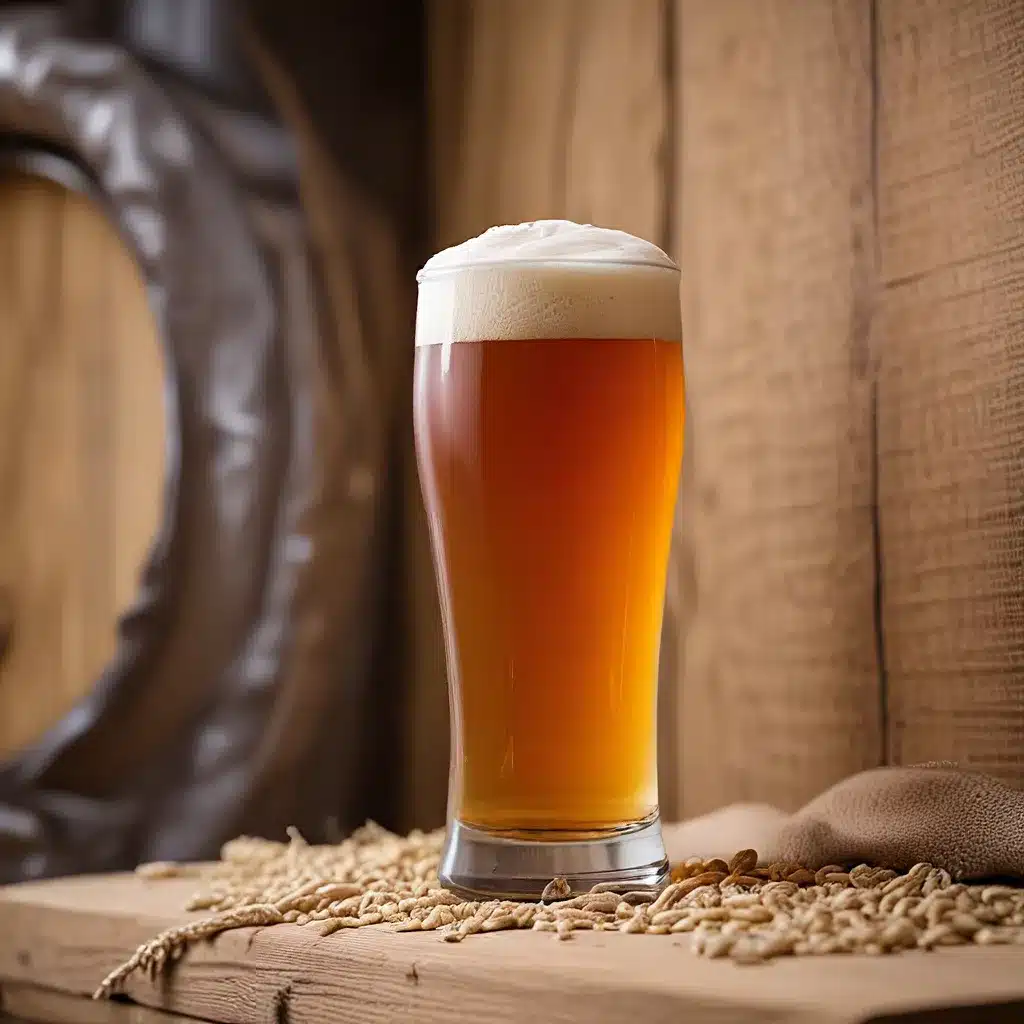
Ah, the humble homebrew – the nectar of the gods, the elixir of the everyman. As a passionate homebrewer myself, I’ve come to appreciate the endless possibilities that lie within the realm of specialty malts. These unsung heroes of the brewing world hold the key to unlocking a whole new dimension of flavor, color, and complexity in our homemade creations.
Discovering the Wonders of Specialty Malts
Now, I know what you’re thinking – “Specialty malts? Isn’t that just for the hardcore beer nerds?” Well, my friends, let me tell you, these little grain gems are the secret ingredients that can transform even the most basic of homebrew recipes into something truly extraordinary.
Picture this: you’re standing in front of your local homebrew supply shop, eyes scanning the shelves, overwhelmed by the sheer variety of malts on display. Crystal malts, chocolate malts, roasted malts, and the list goes on. It’s enough to make your head spin, but fear not, for I’m here to be your guide on this malty journey.
The Homebrewers Association advises that when crafting your own homebrew recipes, you should start by comparing existing recipes for your target beer style. This gives you a solid foundation to work from, and you can then start to experiment with different malts to put your own unique spin on things.
Unlocking Flavor with Specialty Malts
Now, let’s dive a little deeper into the world of specialty malts and how they can transform your homebrew. Take crystal malts, for example – these beauties come in a range of colors and can add everything from caramel and toffee notes to a subtle sweetness that can really make your beer stand out.
And what about those roasty, toasty chocolatey malts? They’re like the dark chocolate of the malt world, adding depth and complexity that can turn a ho-hum stout or porter into a real showstopper. Personally, I’m a sucker for a rich, velvety chocolate stout with just the right touch of bitterness to balance it all out.
But the fun doesn’t stop there, oh no. As the experts at Brew Asia Brewers Network will tell you, specialty malts like Vienna and Munich can lend a subtle toasted or bready character to your beers, perfect for creating those classic European-style lagers and ales.
Mastering the Art of Malt Selection
Alright, so you’re convinced – specialty malts are the way to go. But how do you actually go about selecting the right ones for your homebrew? Well, my fellow brewers, it’s all about finding the perfect balance.
The Homebrewers Association recommends looking at existing recipes for your target beer style and analyzing the grain bills. What percentages of different malts are being used? What are the key ingredients that define the style? Jot these down, and use them as a starting point for your own recipe development.
But don’t be afraid to get a little creative, too. Experiment with different combinations of specialty malts – maybe a touch of caramel for some sweetness, a dash of roasted barley for a hint of bitterness, and a sprinkle of flaked oats for a silky mouthfeel. The possibilities are endless, my friends!
Brewing with Specialty Malts: Mastering the Mash
Okay, so you’ve got your specialty malts all lined up and ready to go. Now, it’s time to put them to work in the mash. And trust me, this is where the real magic happens.
As the experts at Brew Asia Brewers Network will tell you, the mashing process is crucial when it comes to unlocking the full potential of your specialty malts. Things like mash temperature, duration, and even the order in which you add your grains can all have a big impact on the final flavor profile of your beer.
For example, did you know that a longer mash at a higher temperature can help to enhance the caramel and toffee notes of crystal malts? Or that a lower mash temperature can bring out the bready, biscuity character of Munich or Vienna malts? It’s all about finding that sweet spot (pun intended) and dialing in your mash to get the best out of your specialty grains.
And let’s not forget about the importance of proper malt handling, too. As the Brew Asia Brewers Network experts will tell you, things like proper storage and pre-mashing preparation can make a big difference in the final flavor of your beer. So, take the time to really get to know your specialty malts and how to work with them effectively.
Embracing the Art of Experimentation
Now, I know what you’re thinking – this all sounds great, but what if I mess it up? Well, my friends, that’s the beauty of homebrewing. It’s all about the journey, not the destination.
Think of it this way: every time you brew with specialty malts, you’re embarking on a new adventure. You’re a explorer, a mad scientist, a flavor alchemist, all wrapped into one. And you know what they say – the more you experiment, the more you learn.
So, don’t be afraid to try new things, to push the boundaries of what you think is possible. Maybe that chocolate stout would be even better with a touch of smoked malt. Or perhaps that Vienna lager could use a little extra caramel punch from some crystal malt. The only way to know is to dive in and see what happens.
And hey, even if things don’t turn out exactly as planned, you know what they say – the best way to improve your brewing skills is to keep on brewing. So, grab your mash paddle, fire up the kettle, and get ready to unlock the full potential of specialty malts in your homebrew. The journey awaits!
The Up and Under Pub is the perfect place to showcase your newfound mastery of specialty malts. Stop by and let us know what you’ve been brewing – we’re always eager to try the latest and greatest creations from our talented homebrewing community.

